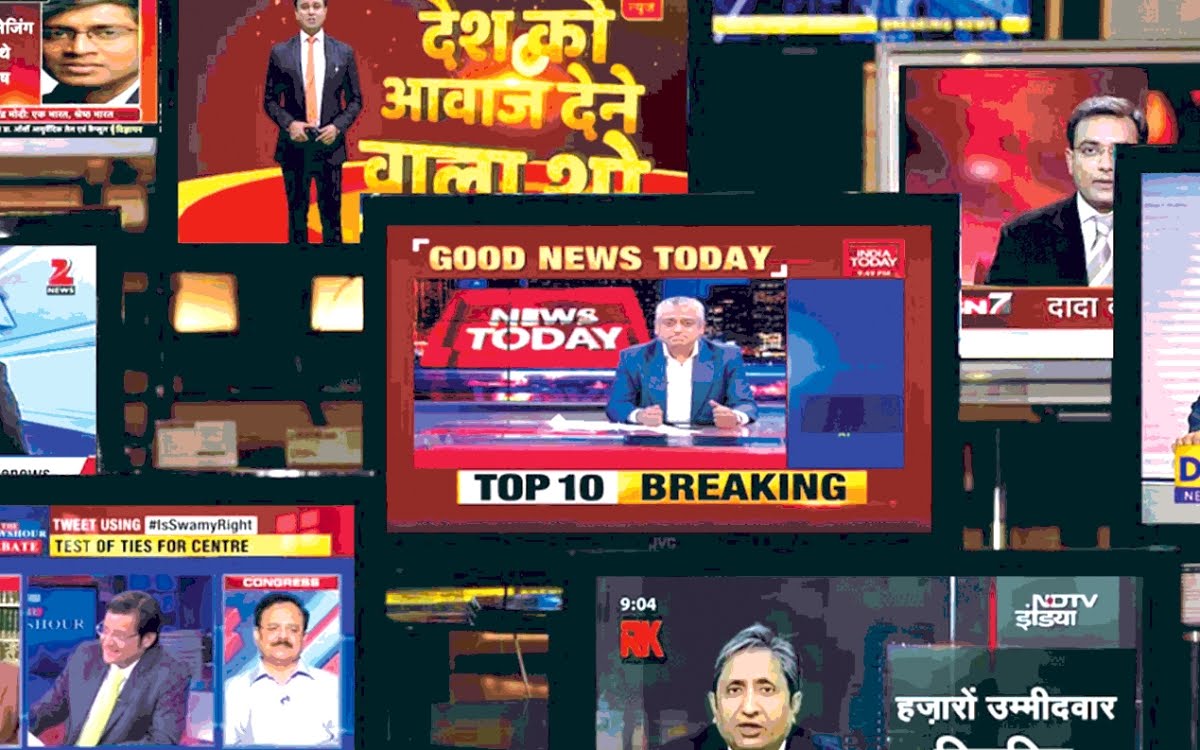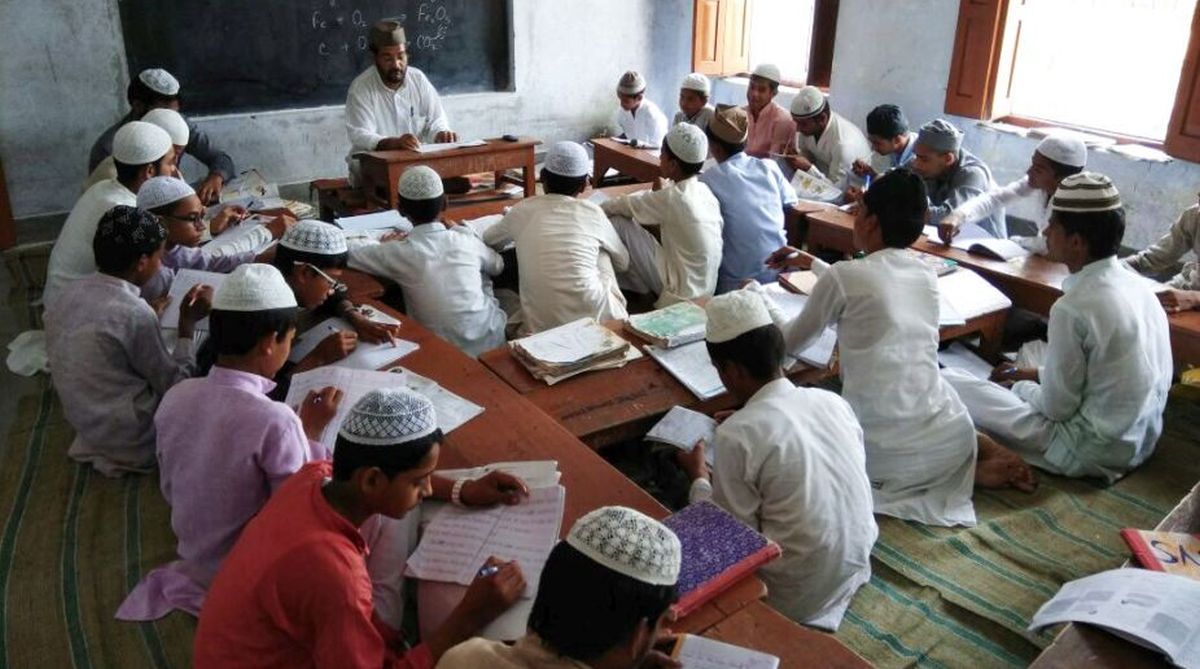Journalism in India is facing a crisis but the question is, does it need saving? Or more so, does it even admit a crisis? Over the past years, we have seen how prime time debates, news coverage unlocked new levels of unethical, political, jingoistic behaviour where each debate seem no less similar to an average Indian daily soap. The prime time debates or coverage become ‘prime time religion’. To say the least, Indian media has failed on the very soul of it. To be ‘the voice of public and not only present truth to public but also speak truth to power’ is what the heart and soul of such journalism.
The healthy forum where both the sides present their stance without shouting, moderator jumping in to stop physical fights and quarreling is a dream too good to be true. By creating religious conflicts disguised as political differences, making a fighting ring for leaders or representatives of two parties or religious groups day in and day out, TV news channels have created or have attempted to create a ruckus and a deep division in the society. Hate speech, targeting and inciting communal passions is what such debates thrive on.
The healthy forum where both the sides present their stance without shouting, moderator jumping in to stop physical fights and quarreling is a dream too good to be true.
Outside the three estates of democracy, it is the Indian media which is supposed to fuel the democracy to function. The over sensationalisation of naming the debates, where panelists and anchors shout their views by replacing researched facts by mindless opinions and anger. Click-baiting and dramatization of prime debates, setting the agenda of the dangal has replaced the basic ethos of what journalism stands for. “Ram Hamare, Masjid wale kahan se padhare?” (Ram is ours, where Muslims come from) was a recent prime time debate on an Indian media channel. Triggering headlines and use of religious, political symbols create a package that is fed into minds of common public. The screen is no more different than reality TV shows like Big Boss. Inflammatory. Prime time television is a platform to peddle hatred and create divisions of ‘us’ versus ‘them’. On live television many times, the use of words like “anti-national” has become common.
So is Indian media selling new commons of communal hatred?
“Yes, I do believe that sections of the media have contributed greatly to the growing intolerance in our country. These sections have sought to portray a seventh of India’s population –comprising Muslims and other minorities- as a second class citizens, which is In keeping with ideology of many in the ruling regime,” Parajoy Guha Thakurta, told Gulf News in a recent article.
While the TV industry does claim to have a so called self-regulatory mechanism to monitor inflammatory or unethical content, there is little to no evidence that these channels are following any guidelines. “I think a large section of the Indian media, especially TV has played a pernicious role in amplifying bigotry towards minority groups.it is shameful and reflects a moral degradation in search for TRPs,” Rajdeep Sardesi, consulting editor, India today group told gulf news.
While many millennials like us and the urban elites have openly denounced these news channels and have stopped watching these channels, these prime time debates form a part of basic Indian family routine. The wide reach of media and the ability to set discourse and discussions in public sphere is dangerous for the very fabric of the country. What discussions will the average Indian tea stall or daily passengers in Indian railways have? The shift from other important issues of Indian diaspora and little standards of moral ethics in debates is a deteriorating situation for the fourth estate. But will the non-engagement or ignorance of these Indian media houses help? Completely no. We can ignore it but we simply cannot escape it. As rightly said, “Not all battles are fought for victory — some are fought to tell the world that someone was there on the battlefield.”
The shift from other important issues of Indian diaspora and little standards of moral ethics in debates is a deteriorating situation for the fourth estate. But will the non-engagement or ignorance of these Indian media houses help? Completely no. We can ignore it but we simply cannot escape it. As rightly said, “Not all battles are fought for victory — some are fought to tell the world that someone was there on the battlefield.”
TRP And Funding That Sell Journalistic Ethics And Morals
Now is a good time to discuss the role of media and to play it better in coming future. The two integrated root causes are TRPs and funding. The ethical standards of journalism have always been targeted by two worst enemies, “popularity and sensationalism”. There is constant hunger of sensationalisation of news whether in times of Yellow press in US to increase sales or the war of TRPs. It is evident that there is no scarcity of news out there, but who will take the pain to go outside comfortable newsrooms and report? Or present truth or the other side of truth?
Also read: How To Sensitively Interview Survivors Of Sexual Violence | #GBVinMedia
More often the audience is blamed for the whole crisis. But isn’t the job of journalism to drive on corporate profits or remain independent from what the audience or “majority of audience” wants to see, and present the facts? Politicians, spokespersons, self-claimed community leaders screaming was never new and cannot be news ever. News without facts and debates without morale are lost, the two basic ‘products’ of media. The Indian media needs a reform. The end of the decade saw downfall of Indian journalism. The start of new decade needs to see a reform.
One of the two important factors other than TRP is “Funding”. Who is gate-keeping the gatekeepers? More importantly, who owns the media and funds this media? The media houses driving on ownership and advertisement in India are, “subject to the whims and fancies of politicians and corporates. In both scenarios, journalists are often expected to pull punches to keep their masters happy,” said Karnika kohli in the article of The Wire. Until and unless, media is not free from these pressures, we can never achieve the moral ethics and standards for the fourth estate.
Conclusion
We have seen the rise of alternative media or citizen journalism in Indian media or public sphere. A parallel independent news industry on the Internet, led by individual citizens and small organisations is evident. Some of the reliable and unbiased media houses though smaller reach are an example of providing good quality journalism and speaking truth to power. The public funded or different business models different from likes of TRPs, advertisements from state or corporations are essential. The rise in subscriptions of New York Times in US despite of being targeted by the President is an example of how subscription based model is crucial and successful.
For a democracy and for the world’s largest democracy to flourish the fourth estate or pillar needs to check on the other three. To inform, educate and enlighten is the need of hour. For the media fraternity in India, there is a need to come out and call out the dos and don’ts for media persons, houses and agenda setters. For the public, there is a need to look for the signs and be more aware than ever and acknowledge that there is a problematic situation or strain happening.
It is true, Journalism in India is facing a crisis and we can’t afford to let it down. Not now, not anymore.
Also read: How Do Newspapers Report Rape Cases In India? | #GBVinMedia
References
Featured Image Source: Gulf News




